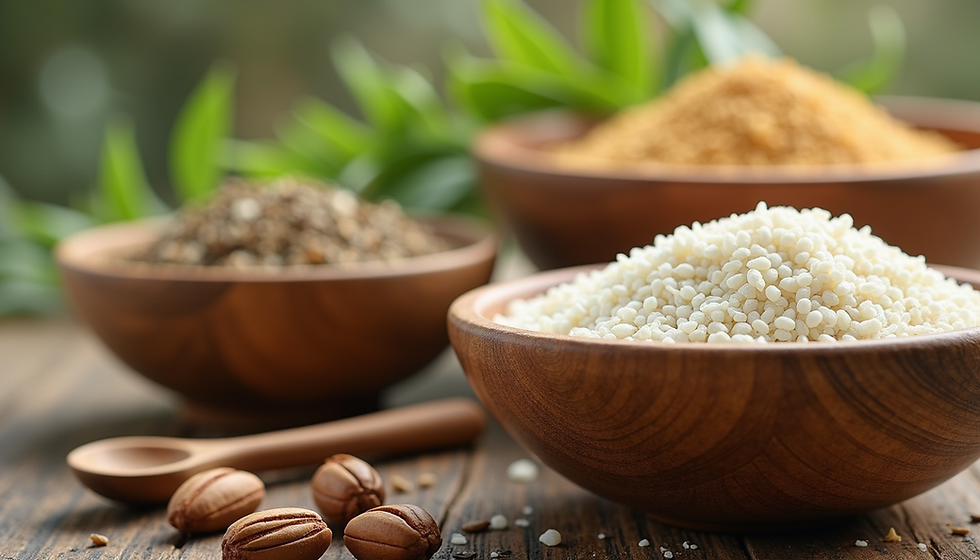Mastering Your Seasonal Skincare: Navigating Every Climate with Confidence
- templeubeauty

- Nov 18, 2024
- 4 min read
As each season rolls in, your skin experiences shifts that can affect its health and appearance. Moving from the bright sun of summer to the biting cold of winter, your skin requires careful attention year-round. Adapting your skincare routine based on seasonal changes can help maintain balance and glow, ensuring your skin looks its best regardless of the weather. This guide will provide clear steps to combat common skin challenges and recommend effective products tailored to each season.
Understanding Seasonal Skin Changes
Seasonal shifts can have a big impact on your skin's texture, moisture, and overall health. Key factors such as temperature fluctuations, humidity levels, and UV exposure directly influence how your skin reacts throughout the year.
For instance, in summer, you might notice your skin becoming oilier, which can lead to pesky breakouts. On the other hand, the cold, dry air of winter can sap hydration, leaving your skin feeling tight and irritated. By adjusting your skincare routine according to the seasons, you can better maintain moisture, balance, and a healthy glow.
Spring: Refresh and Renew
Springtime brings longer days and warmer weather, but it can also lead to allergies and sensitivities. It’s time to refresh your skincare routine with gentle products that promote renewal and comfort.
Common Challenges
Allergies: Exposure to pollen and other allergens can cause skin irritation, resulting in redness and discomfort.
Increased Oil Production: As temperatures rise, your skin may produce more oil, which can lead to shine or breakouts.
Recommended Routine
Gentle Cleanser: Opt for a lightweight, hydrating cleanser that effectively removes impurities without stripping moisture. Look for ingredients like aloe vera or chamomile.
Exfoliate: Use a gentle exfoliant once a week to ward off dead skin cells. Try products with glycolic acid, which can improve skin texture.
Hydrating Serum: Incorporate a serum rich in hyaluronic acid to help retain moisture.
Light Moisturizer: Use a gel-based moisturizer for a refreshing feel that hydrates without being heavy.
Sunscreen: With the sun’s intensity increasing, apply a broad-spectrum SPF 30 or higher every morning to protect against UV rays.

Summer: Combat Oily Skin and Sun Damage
Summer heat and humidity can bring skin challenges like excess oil and sun damage. Adjusting your products is vital for maintaining clear and protected skin.
Common Challenges
Oiliness: High temperatures can lead to greasy skin and clogged pores.
Sun Damage: UV exposure raises the risk of sunburn and long-term damage.
Recommended Routine
Oil-free Cleanser: Select a foaming or gel cleanser that removes oil effectively without over-drying your skin.
Exfoliation: Continue exfoliating weekly. Salicylic acid in cleansing products can help keep pores clear and reduce breakouts.
Lightweight Sunscreen: Look for a non-comedogenic sunscreen that offers robust protection without a greasy feel.
Moisturizing Gel: Choose a water-based moisturizer for hydration that feels light and refreshing.
After-Sun Care: Keep an after-sun soothing lotion with aloe vera handy for treating any sunburn.

Autumn: Repair and Restore
With cooler temperatures in the fall, your skin can experience dryness. This is the perfect time to focus on repair and nourishment.
Common Challenges
Dryness: As temperatures drop, your skin may lose moisture more easily, leading to a parched appearance.
Skin Sensitivity: Many people notice increased sensitivity as skin adjusts to the humidity drop.
Recommended Routine
Creamy Cleanser: Switch to a cream or oil-based cleanser that deeply cleanses while providing hydration.
Hydrating Toner: After cleansing, use a hydrating toner with ingredients like rosewater or cucumber extract for extra moisture.
Nourishing Moisturizer: Transition to a richer cream that combats dryness while locking in moisture.
Exfoliating Treatment: Introduce a treatment with glycolic acid to keep your skin smooth and supple during this transition.
Eye Cream: Use a nourishing eye cream to address dryness and fine lines in the delicate eye area.

Winter: Intense Hydration and Protection
Winter is infamous for its drying conditions that can leave your skin feeling tight and uncomfortable. Focusing on hydration is crucial during this season.
Common Challenges
Extreme Dryness: The combination of cold air and indoor heating can deplete skin moisture at an alarming rate.
Flakiness and Irritation: Insufficient hydration can lead to flaky skin and increased sensitivity.
Recommended Routine
Hydrating Cleanser: Use a creamy or oil-based cleanser that cleanses effectively without stripping essential oils.
Double Cleansing: If makeup use is daily, consider double cleansing: start with an oil cleanser followed by your regular cleanser.
Thick Moisturizer: A rich, emollient cream can create a protective barrier, locking in moisture efficiently.
Face Oil: Enhance hydration by incorporating a nourishing face oil into your routine, especially at night.
Humidifier: Use a humidifier in your home to add moisture to the air and combat dry conditions.
By implementing these seasonal skincare routines, you can help your skin adapt and thrive, regardless of what weather conditions arise.
Your Path to Healthy Skin
Mastering your seasonal skincare routine is about knowing your skin’s evolving needs throughout the year. Recognize the specific challenges each season presents and use the right products and habits to manage them. By adjusting your routine along with the weather, you can enjoy healthy, radiant skin that feels comfortable and looks beautiful.
Take the time to evaluate your skin’s condition as the seasons change. If you face persistent issues, consult with a dermatologist for personalized advice. Embrace the seasonal shifts with confidence, knowing the vibrant glow of well-cared-for skin is within your reach. Making simple adjustments to your skincare can lead to noticeable improvements, helping you greet each season with a radiant complexion.






Comments